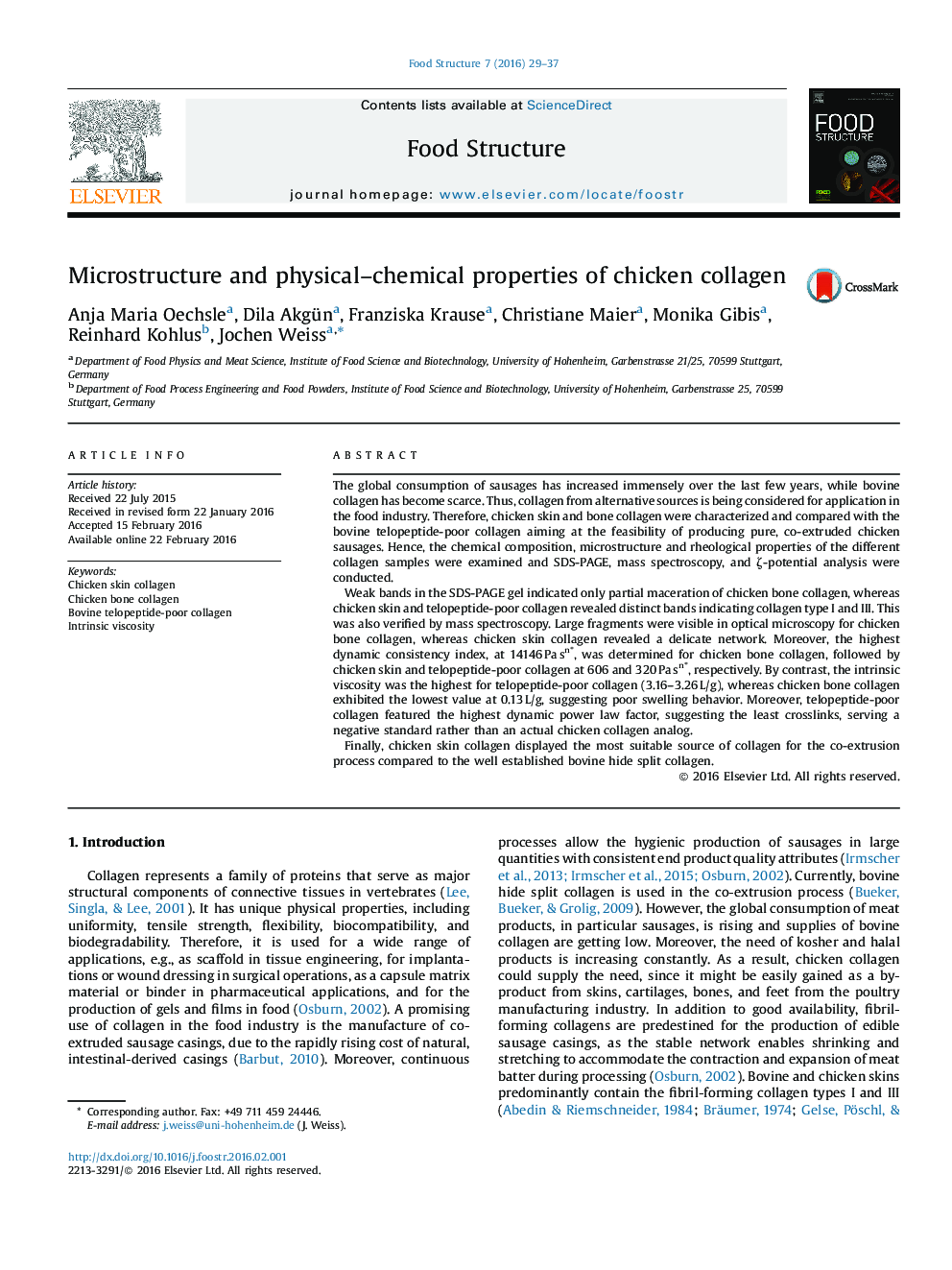| کد مقاله | کد نشریه | سال انتشار | مقاله انگلیسی | نسخه تمام متن |
|---|---|---|---|---|
| 19900 | 43142 | 2016 | 9 صفحه PDF | دانلود رایگان |
• Chicken skin collagen resembles the fibrous bovine telopeptide-poor collagen most.
• Chicken bone collagen reveals firm fragments and a low intrinsic viscosity proposing insufficient extraction.
• The shear thinning behavior increases with the degree of crosslinks within the collagen.
• The intrinsic viscosity is linked inversely to the collagen complex viscosity.
The global consumption of sausages has increased immensely over the last few years, while bovine collagen has become scarce. Thus, collagen from alternative sources is being considered for application in the food industry. Therefore, chicken skin and bone collagen were characterized and compared with the bovine telopeptide-poor collagen aiming at the feasibility of producing pure, co-extruded chicken sausages. Hence, the chemical composition, microstructure and rheological properties of the different collagen samples were examined and SDS-PAGE, mass spectroscopy, and ζ-potential analysis were conducted.Weak bands in the SDS-PAGE gel indicated only partial maceration of chicken bone collagen, whereas chicken skin and telopeptide-poor collagen revealed distinct bands indicating collagen type I and III. This was also verified by mass spectroscopy. Large fragments were visible in optical microscopy for chicken bone collagen, whereas chicken skin collagen revealed a delicate network. Moreover, the highest dynamic consistency index, at 14146 Pa sn*, was determined for chicken bone collagen, followed by chicken skin and telopeptide-poor collagen at 606 and 320 Pa sn*, respectively. By contrast, the intrinsic viscosity was the highest for telopeptide-poor collagen (3.16–3.26 L/g), whereas chicken bone collagen exhibited the lowest value at 0.13 L/g, suggesting poor swelling behavior. Moreover, telopeptide-poor collagen featured the highest dynamic power law factor, suggesting the least crosslinks, serving a negative standard rather than an actual chicken collagen analog.Finally, chicken skin collagen displayed the most suitable source of collagen for the co-extrusion process compared to the well established bovine hide split collagen.
Figure optionsDownload as PowerPoint slide
Journal: Food Structure - Volume 7, January 2016, Pages 29–37
